Here are the most coveted natural and clean foundations of 2023, expertly curated by Kristin Adams, a natural cosmetic industry expert.
If you are looking for the best natural and clean foundations, this post is for you! Below are my 18 best natural and clean foundation picks for 2023 that approximate the formulation, vibration, and the Afterglow ethos.
If you’ve found your way to this particular blog post, you may be looking for a comparable replacement for your now-unavailable Afterglow Organic Infused Mineral Foundation.
Or, perhaps you are new here and still on the hunt for that elusive “perfect match” that leaves your complexion, mind, and conscience beautiful, happy, and calm.
Either way, welcome!! I wrote this post for you.
But just a warning…
This is a long post with a lot of insider information I’ve never shared about how the natural cosmetics industry works… and what you need to know when shopping so you buy a product that aligns with your values, ethics, and expectations.
I want you to get what you’ve paid for and support those beauty companies that truly speak to your principles.
Impatient? Jump directly to my list of recommendations here.
My list of the best natural and clean foundations of 2023 includes loose mineral powder foundation, pressed mineral powder foundation, liquid foundation, and cream foundation.
Tell Me What You Love
Perhaps you bravely switched to a new natural or clean foundation on your own and found one that works for you. If so, I want to know about it in the blog comments below!
Please leave a comment at the end of this blog with the brand name, product name, and your experience with the product to give as many options as possible to the Afterglow community.
Before I Show You the Goods
Before I reveal my 18 best natural foundations for 2023, I want to set the stage, so you are well-armed with a treasure trove of knowledge to distinguish the naturally fabulous and clean from faux.
Some Things Don’t Change
I’ve spent 18 years in the cosmetic industry as a natural cosmetic brand owner, innovator, product developer, consultant, and professional speaker on the topic of natural cosmetics. I’ve developed hundreds of products for my natural cosmetics brands and other clients as an innovation and product development consultant.
One thing that has not changed in the 18 years I have been working in the natural cosmetic niche is the lack of definition and customer confusion around what “natural cosmetics” actually are.
Natural Is Still Booming, but…
According to Future Market Insights, the global natural cosmetics mark size was estimated at USD 34.5 billion in 2018 and is projected to reach $54.5 billion by 2025. The demand for natural cosmetics is so significant that drug and grocery stores and Ulta and Sephora all now have dedicated natural beauty categories.
Awesome, right?
Well, kind of… but the confusion remains.
The issue remains that we in the USA don’t have a singular legal definition for the category “natural cosmetics.” Even the FDA website says, “FDA has not defined the term “natural” and has not established a regulatory definition for this term in cosmetic labeling.”
The recent invention of the beauty category “clean cosmetics” further complicates the discussion, but I’ll get into that later…
Currently, in the USA, each brand and cosmetics store has defined what “natural cosmetics” means to them. As is often the case, beauty brands each define “natural cosmetics” to conveniently fit into exactly how their products are formulated and include within their definition the not-so-natural compromises they need to make to create their desired formula.
These “compromises” included in some natural cosmetics brands’ definition of natural range from including synthetic preservatives, synthetic fragrances, and synthetic and petroleum-derived dyes like FD&C in their formulas. These “clean” ingredients often show up in an ingredient list as something like this “Red 30 Lake (CI 73360), Red 7 Lake (CI15850) AKA 202, Red 6 Lake (CI 15850)”, as well as a myriad of synthetic binders and glycols.
Can the argument be made for using these synthetic ingredients in a “clean beauty product”? Sure. However, consumers often remain confused and think clean beauty and all-natural beauty are the same.
Are they both fantastic alternatives to traditional cosmetics for those looking to avoid certain ingredients?
Yes.
Are “clean cosmetics” and “natural cosmetics” the same?
No.
Sometimes clean and natural beauty brands transparently share their own definitions with their customers. Often the definitions come from the brand’s marketing department and aren’t coming from the person who formulates cosmetics, or understands the science, or the actual definition of natural as established by certain natural cosmetic ISO (International Organization for Standardization) industry standards (ISO natural cosmetics standard 16128).
And often, the “clean” or “natural” beauty brands completely bypass the conversation regarding their ingredient philosophy, their ingredient selection process, and the unnatural origin of some of the ingredients… and why they chose to include them in the formula anyway while maintaining very earthy brand optics.
What about those natural and non-toxic cosmetic certifications?
The lack of governmental definition around the term “natural cosmetic” in the USA has created a vacuum for private groups to offer certifications and charge a premium for these natural and non-toxic cosmetic certifications.
The most well-known natural cosmetics and non-toxic cosmetic third-party standards are EWG, Made Safe, NSF, EcoCert, COSMOS, and The Soil Association. However, in the US, you don’t see that many natural beauty and clean beauty brands carry these certifications.
Many beauty brands will formulate to these third-party certification standards and use them as a guide even if they can’t afford to get their products certified under that standard.
Why Don’t we see Many Brands with those Natural Cosmetic Certifications?
One word: Expense
Third-party natural cosmetics and non-toxic certifications are expensive, and most natural cosmetic companies are very small.
Unfortunately, most of these natural cosmetics certifications are so expensive that very few natural cosmetics companies can afford to go through the process to get their wide lines of products certified.
Many beauty brands that are just as natural (or even more so) don’t carry these certifications because it’s simply too cost-prohibitive for them to do so as an indie beauty brand.
Bad Advice about USDA-Certified Organic Cosmetics
I often see blog posts about natural cosmetics that suggest that readers “look for the USDA certified organic” logo to find the cleanest organic makeup and organic skincare. This suggestion reveals the writer’s lack of knowledge on their subject, and the suggestion is incredibly misleading to the reader.
Looking for a USDA logo on “organic cosmetics,” especially makeup, is half-baked advice.
The USDA Certified Organic certification is an agricultural and food-grade standard that was not and is not intended for cosmetics. In fact, the USDA Certified Organic certification does not even offer a cosmetic or personal care certification category. This means any cosmetic you see legitimately USDA Certified Organic is certified under an organic food standard.
Those cosmetics with the USDA Certified Organic logo on the product’s packaging must contain at least 95% certified organic ingredients. The remaining 5% of the ingredients must be free from a long list of unapproved ingredients.
Makeup (cosmetics that impart decoration, coverage, and color to the skin) generally requires at least 15%-30% minerals, micas, and pigments to achieve their functional promise. Minerals, micas, and pigments can all be natural in origin, but they are mined from the earth.
These colorants were never living and never part of the agricultural system. As natural as they may be, they are not eligible to be considered “organic” by definition because they are and were never living. The USDA standard is not just for any natural ingredient. It is only for botanical ingredients that have been grown under that organic farming standard.
If you see a makeup product that has a certified organic seal on it, it is likely from Australia, where they offer a standard that takes into account that the vast percentage of the product is not from a botanical origin.
Is the Australian Certified Organic Makeup Better?
No. It means they have a private 3rd party certification the brand paid for that accommodates the fact that most of the makeup formula is inert pigments and not certified organic ingredients. It doesn’t mean the formula is cleaner or the product performs better than a cosmetic that is not certified organic but contains just as high an overall percentage of certified organic ingredients.
“Green” Turns Into “Clean”
Formulating dogmatically natural cosmetics is difficult for many reasons. Truly natural cosmetic ingredients (especially pigments used in color cosmetics) are unpredictable and create batch-to-batch consistency and stability challenges. They have the added challenges of natural odors, shorter shelf life, and love to separate over time.
Many natural formulas require a preservative system to ensure product safety and stability. However, few (if any) natural preservative systems can measure up to the same indestructible multi-year shelf-lives required by the big retailers. Every year we hear of another natural cosmetic brand with a product that wasn’t properly preserved in the hands of thousands of women. 2023’s first national natural preservative scandal involved a mold issue in Kosas Revealer Concealer.
Natural ingredients also come from the earth. In the case of pigments oared from the ground like Iron oxide, this means never-ending batch-to-batch color-matching challenges and possible heavy metal contamination to contend with.
All of the challenges of working with natural cosmetic ingredients are avoided when you opt instead for what some in the cosmetic industry have coined “clean synthetic” ingredient alternatives.
Swapping out all of those annoying, unreliable natural cosmetic ingredients for some “clean” synthetics that don’t have a safety or toxicity rap sheet allows a “clean beauty” brand to address the difficult formulation challenges of making seriously natural products and allows the “clean beauty” brand to make a more stable product with a lot more formulation, color variety, and longer shelf-lives.
“Clean Beauty” advocates will also claim that by replacing natural pigments (like Iron oxide) with synthetic FD&C and Lake dyes they are actually making safer products since the Iron oxide for synthetic dyes removes the major potential heavy metal (mercury and lead) contaminant.
That’s debatable, but better left for a different blog post!
And this is how the “clean beauty” movement started. It found a clever answer to the challenges of natural cosmetics through the magic of clever hybrid formulating and genius marketing.
Do I think that there is something inherently wrong with “clean beauty,” which creates formulas based on the philosophy that there are good, clean synthetic and synthetic ingredients?
Not at all.
Some functionality (including many colors) can only be achieved by using synthetic FD&C and Lake dyes or the less savory (for some) carmine alternative.
What’s the problem, then?
Most people still think “clean cosmetics” are the same as “natural cosmetics” and “green cosmetics.” Many consumers naturally think that a clean cosmetics brand is also 100% natural.
How do I know this?
Being steeped in this industry for so long, hearing feedback from customers and my email, Instagram, Facebook, and LinkedIn feeds full of excited, newly minted multi-level clean beauty brand representatives talking about how natural their clean beauty brand is.
They are not.
One way the indie cosmetic industry found to bi-pass some of the more difficult parts of formulating natural cosmetics was by inventing the “clean beauty” category to have the best of both worlds; the uninformed natural cosmetic consumer and traditional cosmetics retail.
Therein Lies the Problem & Challenge
It presents a real challenge to give you close product suggestions to replace Afterglow Cosmetics’ line because every cosmetic brand that markets toward the non-toxic, natural, and clean crowd has different parameters and a different “No-No List” of what ingredients are absolutely forbidden.
In general, the suggestions I offer below are quite natural. Liquid foundations present the biggest challenge to formulate effectively AND fairly naturally. There are truly natural liquid foundations available, but I think most of them are mildly horrible to wear. If you opt for a liquid foundation, know that it will likely be less natural than the powder foundation options.
Calling it Out
If you’re cool with “clean beauty” and don’t mind a few “clean synthetic” ingredients to be able to enjoy high-quality liquid foundation and all the color variety your heart desires, I understand.
Sometimes a girl wants to use a great, fairly natural liquid foundation that is as clean as possible while not sacrificing performance!
What most irritates me is not the use of benign synthetic ingredients. I’m not cool with customer confusion around what is being purchased.
For example, one of the most trafficked high-end cosmetic websites that sell the most well-known prestige and dermatologist-approved skincare and makeup boasts a “natural” category and states that to be listed as “Natural” on their site, the product’s ingredient label must indicate that “50% or more of the product’s ingredients are derived from a natural source, excluding water.”
Only 50%.
Maybe it’s just me, but only 50% of natural ingredients are not a lot of commitment to claim a whole category called natural cosmetics.
For me, only 50% natural is a failing grade… and it’s their standard.
You can’t tell the percentage of a natural formula by looking at an ingredient list. The first ingredient or two could literally be 96%+ of a formula, with the last 4% comprising five or more additional ingredients. If you do the math looking at an ingredient list many products could be misinterpreted as natural.
As the conversation continues, I look forward to ingredient transparency becoming more… well… transparent and easy to understand.
My top 18 list of natural foundations includes some products that I consider a safer alternative and “natural enough.” All of the foundations I suggest below fit under the less strict umbrella of “clean cosmetics.”
When the product contains non-natural or potentially controversial “clean” ingredients, I make a note so you know the deviation from the more dogmatic natural position you are used to with Afterglow.
Afterglow’s Unique Brilliance
There are a number of aspects of the Afterglow organic-infused makeup line that remain unique in the marketplace. The most obvious point of difference is our dogmatic adherence to maintaining very natural formulas that were also certified gluten-free, corn-free, and soy-free, with an intense emphasis on using certified organic ingredients when available.
There are a number of extremely common cosmetic ingredients are derived from wheat, corn, or soy-derived. Many natural cosmetic companies use one, if not all, of these ingredients (or derivatives thereof) in their formulas.
At Afterglow, we also went one step further to certify our entire brand and every product in the line as GFCO Certified Gluten-Free cosmetics. You won’t see many comments below about brands’ gluten-free and allergen status since, currently, there are only two other makeup lines in the world GFCO-certified gluten-free Gabriel Cosmetics and Ilia Beauty (both linked below).
The process of becoming GFCO Certified is extremely involved and expensive to maintain every year. As with other certifications, most small natural cosmetic companies can’t afford this additional expense. Those who can afford the additional expense and claim that they don’t use gluten in their products may use a contract manufacturer to make their formulas.
This contract manufacturer often makes thousands of other products for many other beauty brands, some of which may contain gluten. This presents a potential cross-contamination issue. If a manufacturer has any gluten-containing ingredients in their facility, they are not eligible to become GFCO certified.
Same Ingredients but Different Experience
I’m sure you’ve had this experience…
You order the same dish (sometimes even from the same restaurant) with the same ingredients but it tastes vastly different from what you remember. The waiter swears that nothing has changed, and the ingredients are exactly the same.
In fact, if you look a little deeper, often what has changed is that they are now sourcing their ingredients from a different vendor (perhaps of different quality), they have a different chef preparing the dish or the method they are now using to cook it has changed.
The same is true for cosmetics.
The exact percentages of each ingredient, the quality and source of ingredients in the product, and the manufacturing method make a huge difference in the final product… even when the ingredient lists are identical.
This is a Guide
This is a guide, not a Bible, and certainly not the last word. After you scan the ingredients list, you can only tell if a product works for you by trying it yourself.
Check their return policy before purchasing, do your own research, make your own intelligent decisions, and dive in!
If you are very sensitive, always patch-test a new product. I’ve included links to all the products throughout this post so you know exactly where to get them.
A Comment About Color
One of the biggest challenges when formulating natural color cosmetics is working with the ingredients that impart color to the products. Each option has its own benefits and drawbacks, which could be a very long post in itself.
The most common forms of color in makeup are synthetic FD&C and Lake Dyes. The other ways to achieve color in makeup are by using naturally sourced mineral pigments like Iron oxides, Zinc oxide, Manganese Violet, Ultramarines, Chromium dioxides, Micas, and Titanium dioxide. The third most common way is by using a natural ingredient called Carmine which comes from the exoskeleton of a certain beetle.
At Afterglow, we always stuck to our ethos of using the most natural ingredients possible. All our ingredients were vegan except for organic beeswax in a few select products.
As you venture out into the world of green, natural, and clean cosmetics you’ll notice many “clean beauty” companies using synthetic FD&C and Lake dyes.
As I mentioned above, many brands in the “clean beauty” movement believe that, albeit totally synthetic, FD&C and Lake dyes are safer than their natural alternatives like Iron oxide.
SPF Claims and the Law
There are two ways to achieve sun protection in a cosmetic formula, with chemicals like Oxybenzone, Octinoxate, Octisalate, and Avobenzone. The other, more natural way to achieve an SPF rating is with a physical blocking mineral ingredient like Titanium dioxide and/or Zinc oxide.
High concentrations of Titanium dioxide and Zinc oxide in a product offer a natural, physical barrier to protect your skin against the sun’s rays.
When you don’t see an SPF claim on an indie beauty brand’s product containing these ingredients it’s generally because they couldn’t afford the expensive lab tests to prove the exact SPF level. It’s illegal in the US to claim an SPF rating on packaging without those very expensive lab test results.
Have Something Nice to Say? Leave a Review
The cosmetic industry is incredibly competitive, and large corporations are doing their best to confuse the conversation about what natural beauty products are and aren’t. Independent natural beauty brands may look big to you, but often the reality is that they are very small and often one bad experience away from closing.
Every time you love a small business’ products, please leave them a review… this is especially helpful online, where there are competing for every sale. It would mean the world to them!
Why is Natural Foundation Important?
Our bodies are bombarded with a confusing cocktail of new chemicals every day, from every conceivable origin, from the polluted air we breathe to the chemical-treated fabrics we use in our car and household to the more than 15,000 cosmetic ingredients found in cosmetics.
That’s a lot for one body to process… often too much. It’s no wonder that a new disease called MCS (Multiple Chemical Sensitivity) has sprung to the forefront and is, unfortunately, growing in victims. If you react to many foods and products you uses, you may have a hyper sensitivity to chemicals. The conversation is complicated, but the natural response to having bad reactions to foods and products is to limit the ingredients and variety until the exact chemical and ingredient triggers are identified. Sometimes people realize that they feel better when they eat and use simple products that are more natural.
All things being equal, I believe it’s best to take the precautionary approach and choose more natural products with shorter ingredients that are overall less complicated – especially if you are already a sensitive person. Your foundation sits on your face all day. Why wouldn’t you want it to be as natural and uncomplicated as possible?
The BEST natural foundations of 2023:
I’ve done the work for you. The following brands were most aligned with Afterglow in pursuit of clean, simple, effective natural foundations.
If you need help understanding shade matching, please read my shade matching guide here.
Thank you so much for being a loyal Afterglow customer and an incredible part of our journey all these years!
AD Some of the links below are affiliate links, meaning this blog receives a small commission if you click through and make a purchase. Your purchase through the link is greatly appreciated and supports the continued upkeep of this blog at no additional cost to you.

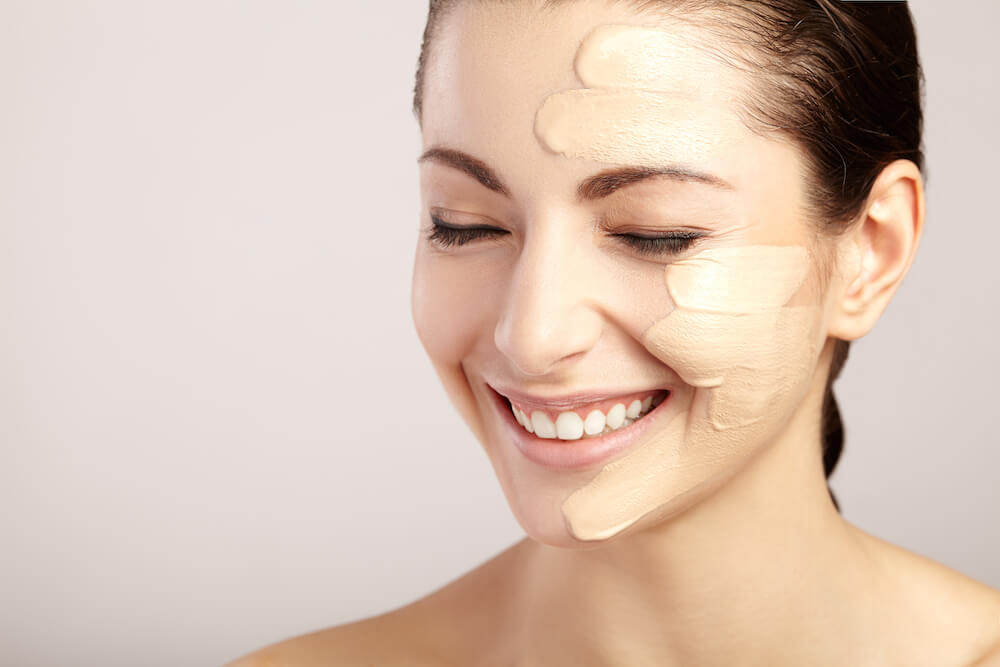
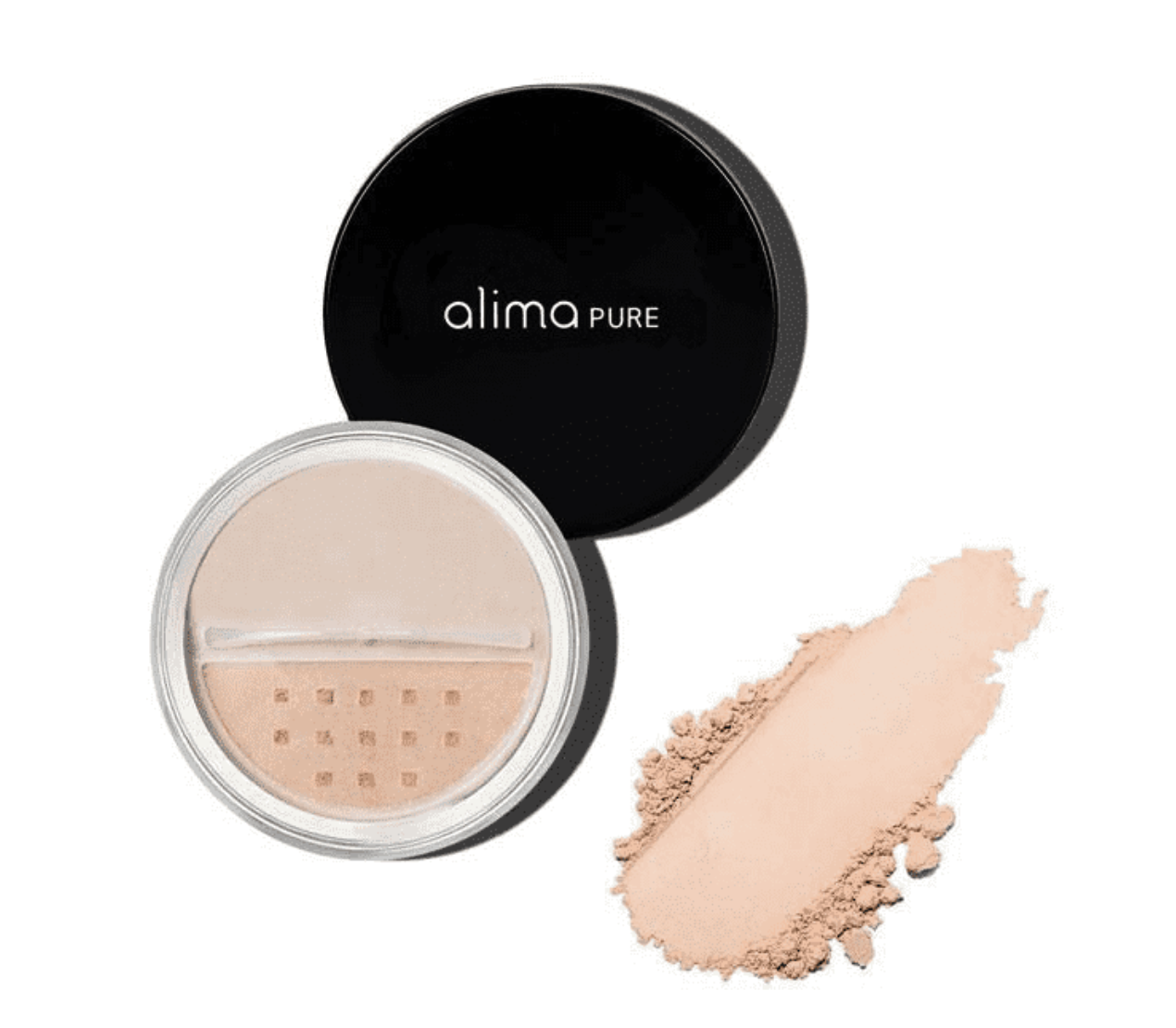
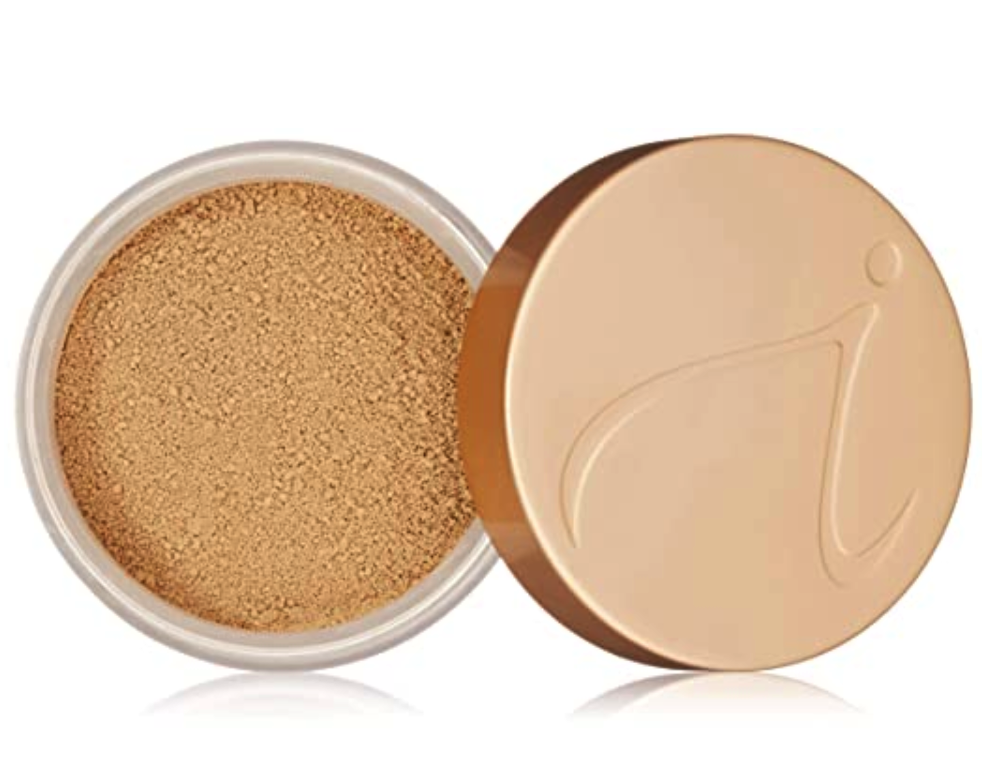
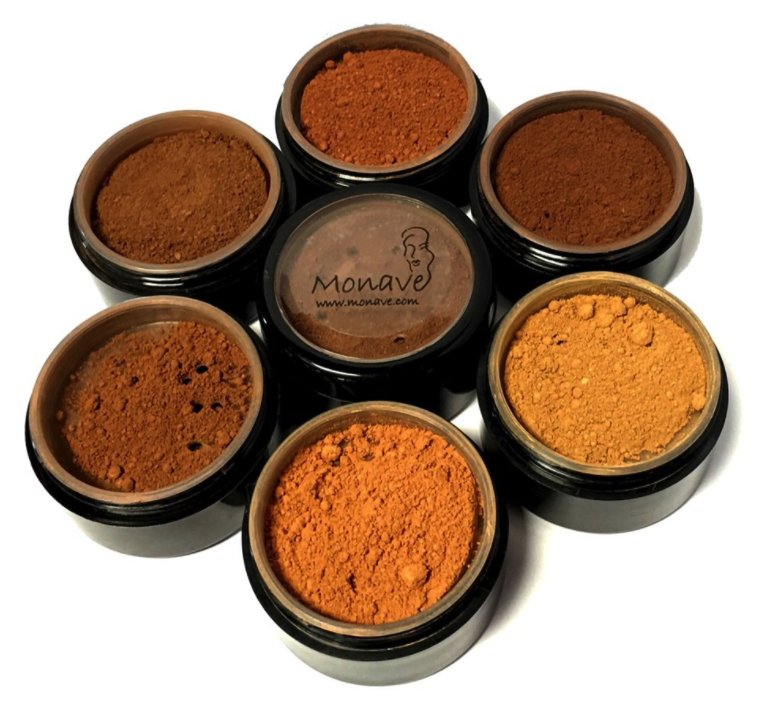
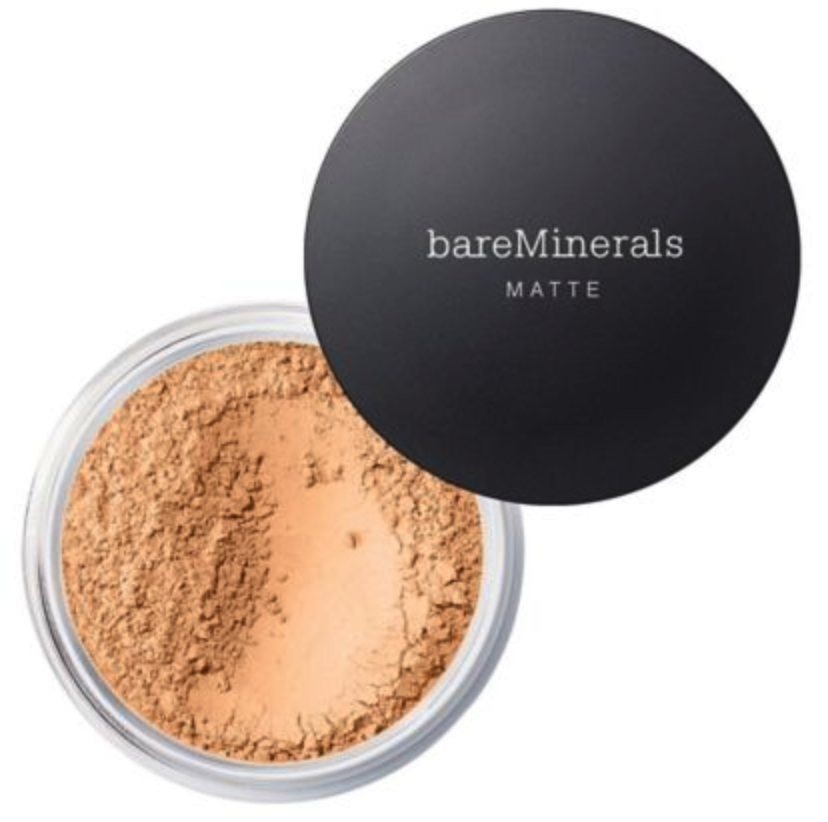
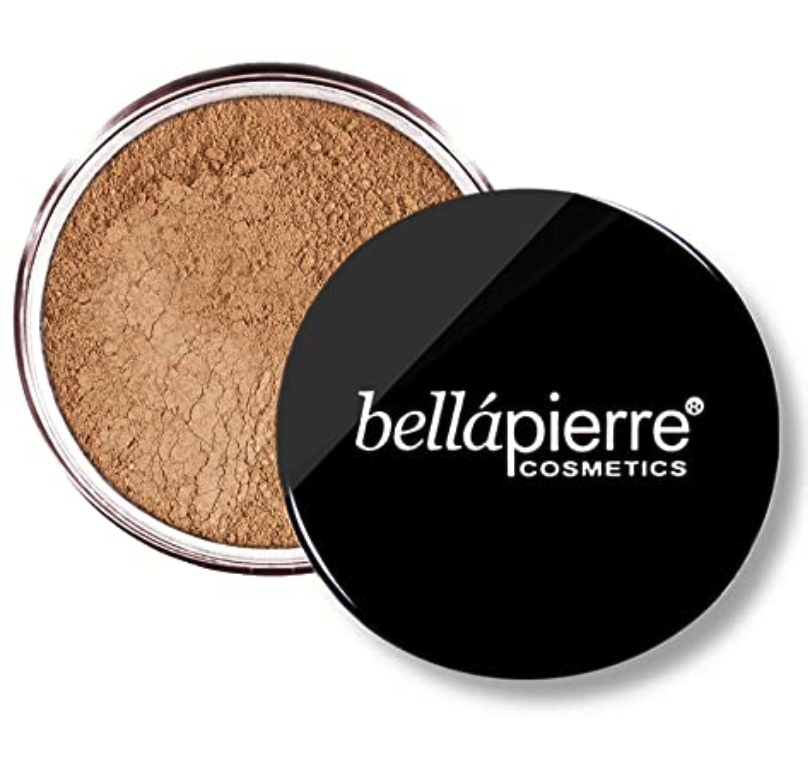
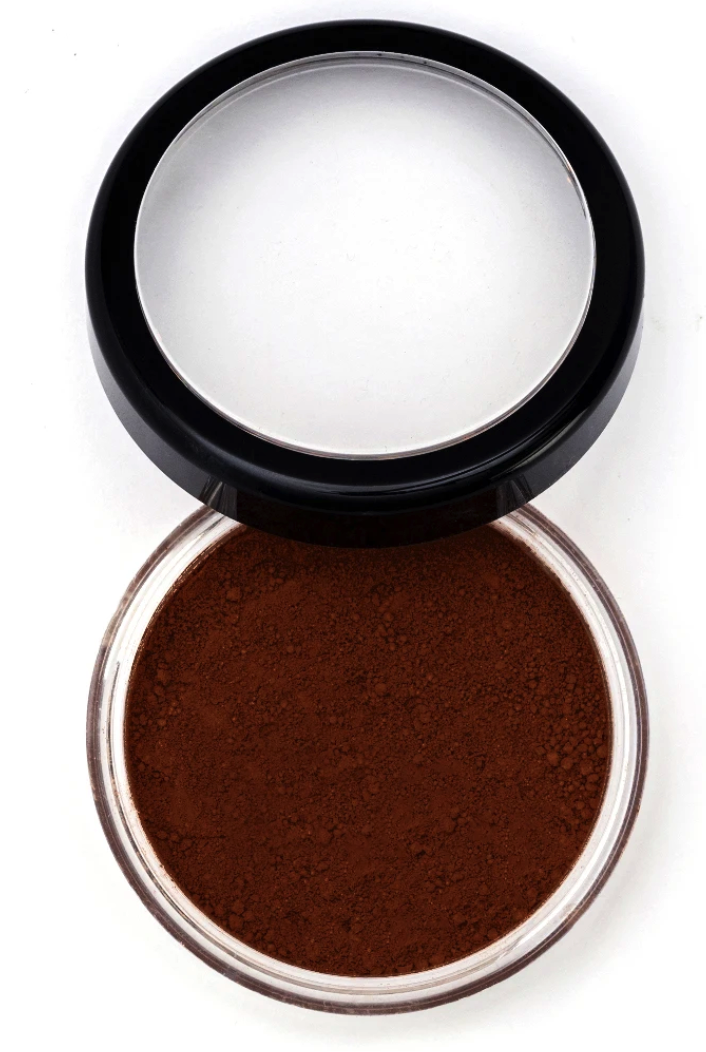
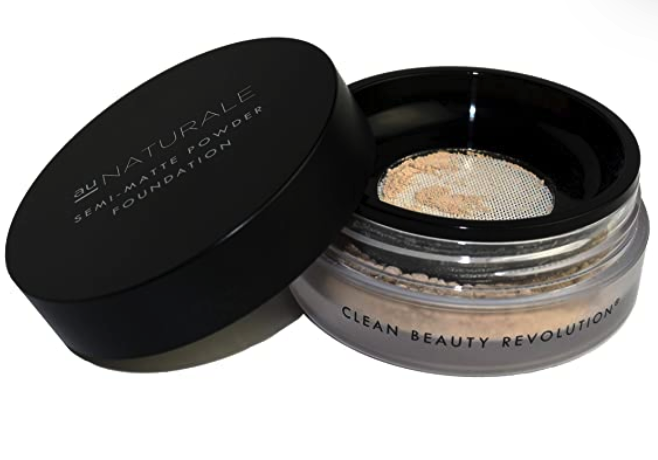
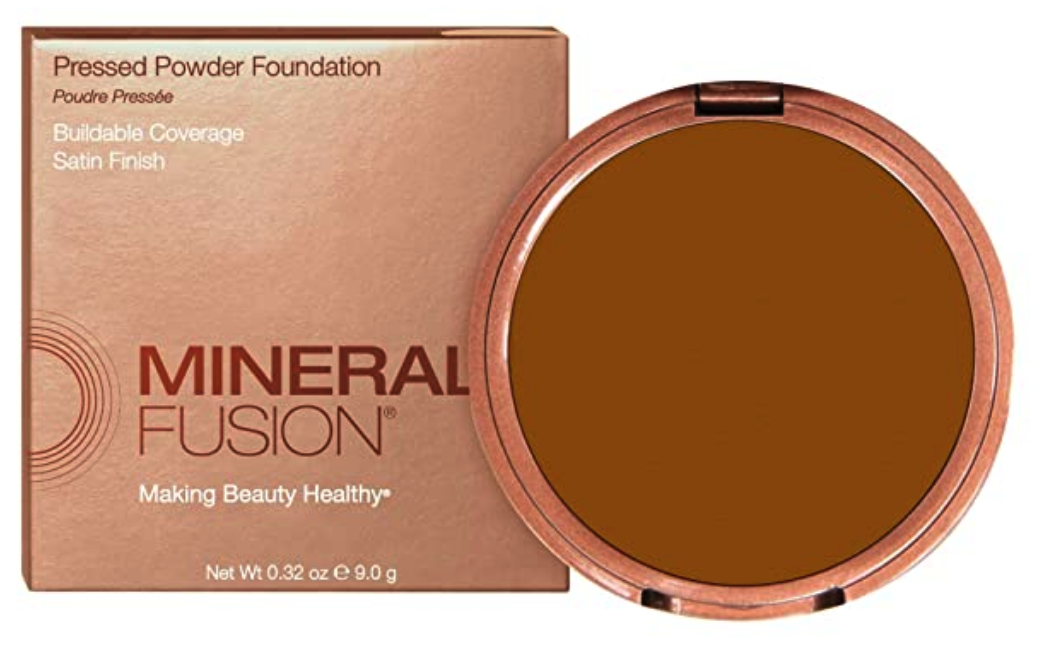
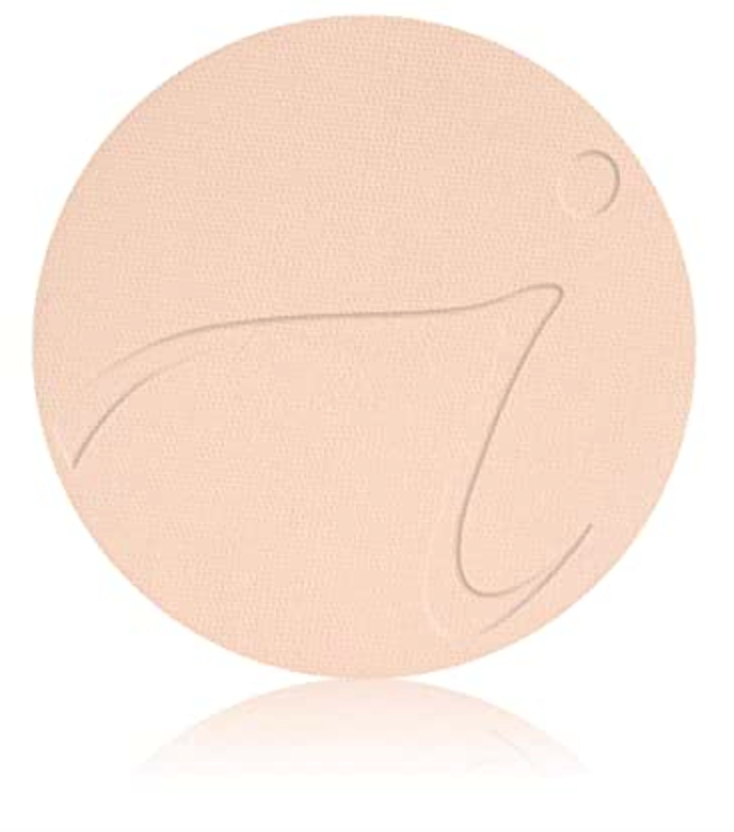
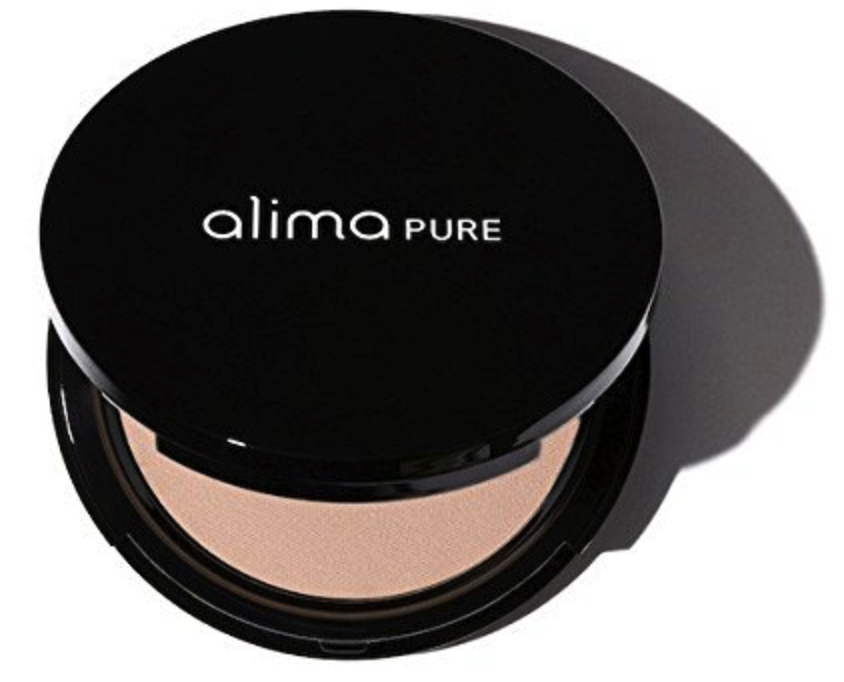
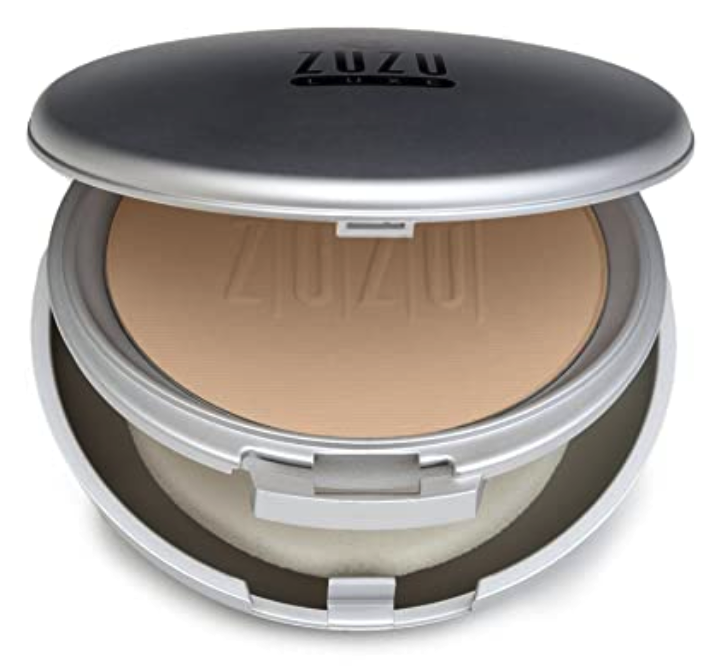
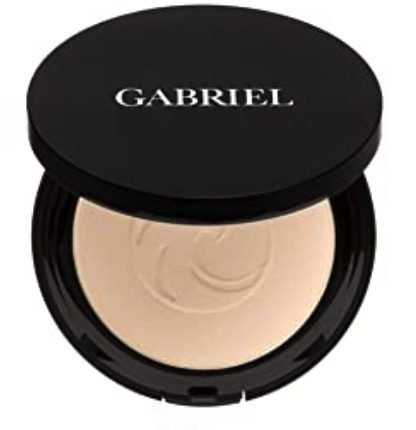
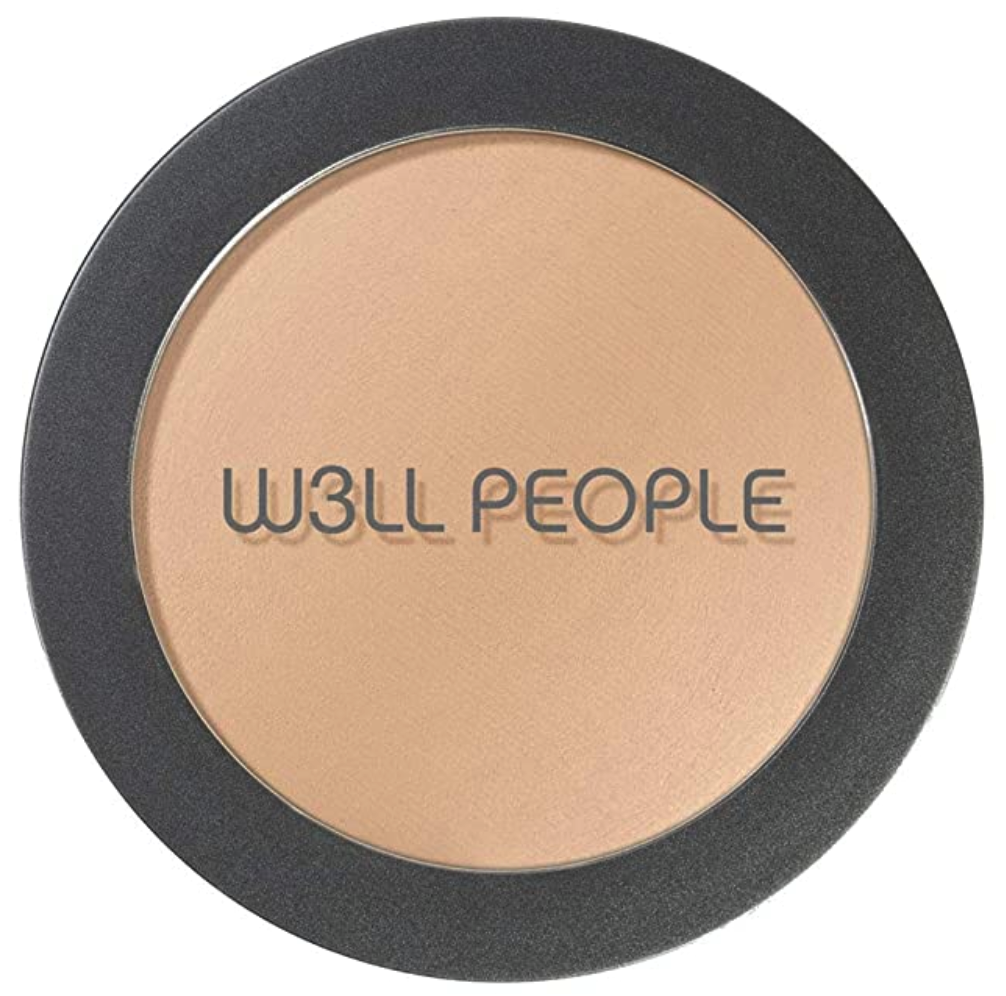
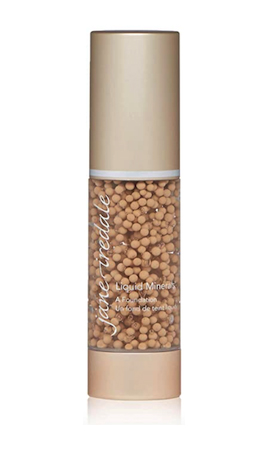
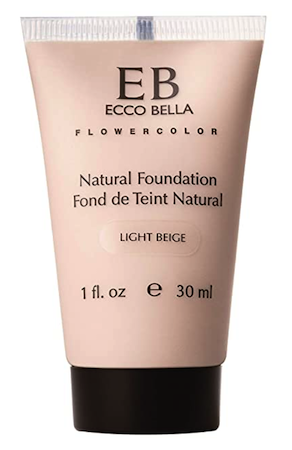
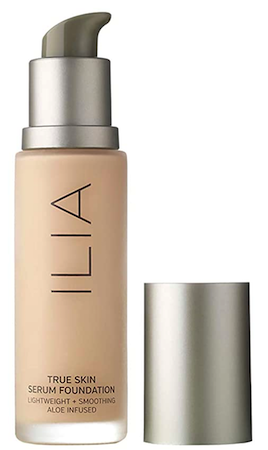
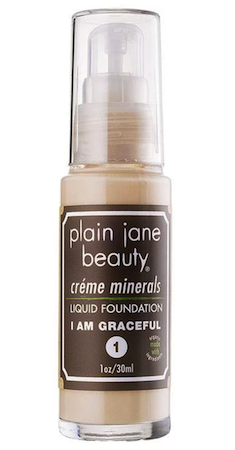
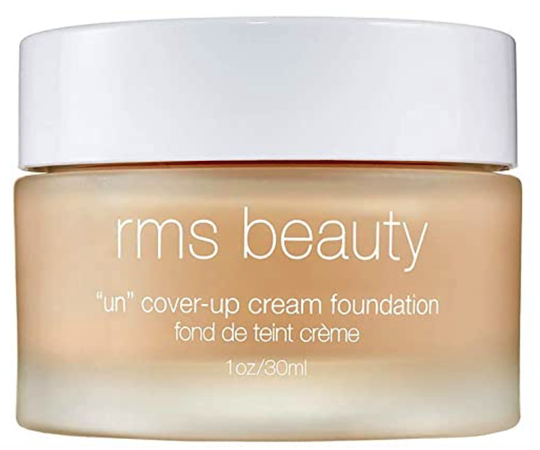

Jane Iredale’s Amazing Base Loose Mineral Powder, Monave’s Mineral Foundation, and Bare Escnetuals Loose Powder Matte Foundation are what typically turns out best for me and my skin tone.
100% pure is usda certified organic works pretty well for me
That’s great Hailey. Thanks for contributing! To clarify, 100% pure offers USDA certified organic skincare but none of their makeup products are USDA certified organic. Even if all of the botanical ingredients in every one of their natural makeup products were certified organic, the products still would be ineligible for certification under the USDA standards because the pigment load (iron oxides, titanium dioxide, etc. that is not botanical) percentage in the formula would be too high. It’s so easy (and confusing) when a brand leads with the USDA symbol on their marketing to think that everything in their line is actually USDA certified organic when that is simply not the case.
I’ve found your company too late. Sadly, I just now found your site and company! I had breast cancer that was hormone positive so finding clean ingredients that are free from soy, corn, gluten has been the toughest. Can you tell me what products you use? Are you still making your own for personal use?
Elle, I’m so sorry to hear about your health challenges. Thanks so much for visiting and posting. I’m posting blog posts like this one to offer my visitors my best suggestions for products comparable to Afterglow in terms of being corn-free, gluten-free, and soy-free. I am still making my own products for personal use. I also still work in the industry as a product developer and consult cosmetic product and ingredient manufacturers. Sign up for my Afterglow newsletter, Facebook, and Instagram pages for updates on the products I recommend!
I really miss Afterglow and I’m struggling to find a good alternative to Meringue under eye concealer. Any recommendations would be greatly appreciated.
Oh, I REALLY miss Afterglow too! And the Perfecting Under Eye Concealer was so perfect. I suggest you try RMS’ ‘Un-Coverup”.
Hi Kristin,
What do you think of Nature’s Brands Bella Mari Natural Mineral Powder Foundation and Natural Moisturizing Foundation?
And thank you for all the great info!
Thanks for the suggestion Donna! I have never heard of that brand or used them but the ingredient list looks very simple. I have an aversion to any brand at this point that advertises “chemical-free” as they currently are because it’s simply not true. Literally, everything is a chemical… including water and all the natural chemical ingredients they use in their products!
I blog often and I truly appreciate your content.
This article has truly peaked my interest. I am going to book mark your website and keep checking for new information about once
a week. I subscribed to your Feed too.
As a women with dry mature skin with lines,wrinkles and pores we can’t use loose and pressed mineral powders. I know they are the safest and best to use but that is for the younger women with no issues on their faces. What do you recommend for a dewy makeup foundation?
Donna, I totally agree. Powder foundations don’t work for everyone! That’s why I included seven cream foundation and liquid foundation suggestions in the above list of my 20 favorite foundations! Enjoy! – Kristin
Hi Kristin,
Thank you so much for your recommendations. I really appreciate it. I was an afterglow customer for many years. I stocked up well after you announced the sad news so I still have some foundations but I will try one of the brands you recommended. Do the same information apply when looking for lipsticks?
Thank you.
Thanks for your comment and your years of support Catherin! The same principles apply to select lipsticks. I will be posting my recommendations for natural and clean lipstick to this blog soon. A number of the brands I suggest above for foundations will also appear in my lipstick roundup, so if you can’t wait for my post, those brands would be a great place to start!
I have been using 100% Pure’s “fruit pigmented healthy foundation” & “bamboo blur tinted moisturizer. Aside from the fact that I have to blend two colors to get a match,I have really liked it thus far. Any comments on those products or the brand as a whole? I really trust your input and really appreciate this post!
Shawna, 100% Pure’s “Fruit Pigmented Healthy Foundation” and “Bamboo Blur Foundation”‘s ingredient list looks clean… if it works for you that’s what counts! It wasn’t one of my top favorites.
I also have a lot of reservations about the legitimacy of their “fruit pigment” claim. I just don’t believe it after working with many very reputable cosmetic chemists in the industry. There are only a few colors one can get from fruit and they are not similar to the ones showing up in that brand’s products.
For the most part, when the pigment from fruit juices sits around for more than a few hours it ALWAYS turns brown. There is no way to stabilize it or freeze it into a lovely medium cool pink watermelon shade. If there were EVERY cosmetic company would be licensing their intellectual property to create more natural products without the use of dyes or Iron oxides… and companies like Burt’s Bees would stop using carmine to get their cool reds and pinks and just use this miracle ‘fruit pigments’.
I just don’t buy it (their “fruit pigment” claim conceptually…and feel like something is missing from their transparency). Without having their products tested in a lab I can’t tell you for sure though. It’s just my perception of the brand (and it echos many other’s opinions).
But in general, their ingredient lists are very clean. Just a gut feeling I have about the brand in general. I would love lab tests to prove me wrong. Thanks so much for your comment Shawna!
I will really miss Afterglow. Finding a gluten-free, corn-free foundation was tough the first time. Thank you for your list. I am hoping it will make finding Afterglow’s replacement a bit easier. Unfortunately, I didn’t see too many claiming to be free of both gluten and corn. Thank you for you insight into the industry as well. It is very useful information.
Thank you so much JaNeille. I echo your sentiments 100%. The only way to confirm if a company is formulating without wheat and corn-derived ingredients are to confirm their claims on their site or contact them directly. There are a number of cosmetic ingredients derived from corn, wheat, and soy. Best of luck and thank you so much for your support through the years!
Thank you for this valuable information. It is most appreciated. I was an Afterglow cosmetics customer for years. I loved your mission and your products! I was so sad to see you discontinue your line of amazing cosmetics. I am so glad that you are continuing to spread your valuable knowledge with those of us that truly care what goes into our beauty care and cosmetic products.
Thank you so much for your kind words Mary! I really appreciate your support over the years!
Appreciate the recommendation. Will try it out.
I have spent a ton of money trying out different products for color matching, including Monave, Bare Minerals, 100% Pure, and Meow Cosmetics. None of them seems to have a color that matches Afterglow’s Camel selection. Very serendipitously, I was having a facial at a Resveralife Spa one day and mentioned to the esthetician I was looking for a good mineral foundation that would match my complexion. It just so happened they used to offer makeup consultations at this spa but had discontinued that service. However, they still had a drawer full of MICA foundations and he reached in and pulled out the color he felt would be the best match and just gave it to me. The color was Latte. Held together under all types of lighting, there is little discernible difference between the MICA Latte and Afterglow Camel formulations. The only real difference is on application. The MICA brand leaves me looking a little paler and kind of washed out but it is the closest thing I can find so I use it anyway. Do you have any other suggestions for brands and color matching?
Thanks for your input Denise! I’m glad you found a foundation that works for you! I also wore Camel in the summer and deeply miss it!
My trick for working with a foundation that is right in every way but just a bit too light is to also use a bronzer. You can lightly sweep the bronzer over your face or use it as a very lightly contour to bring the overall shade of your face to a more balanced level.
The MICA brand uses three ingredients that we didn’t use in our foundations at Afterglow: Chromium Oxide Green (CI 77288), Ultramarine Blue (CI 77007), Bismuth Oxychloride (CI 77163). The green and blue pigments are what give that specific shade its more olive/neutral tone. The Bismuth Oxychloride is a natural ingredient but makes some itch intensely and break out.
You can find more information about it here: https://www.afterglowcosmetics.com/bismuth-oxychloride-free-makeup/
If you’re comfortable with the ingredients and it’s working for you that’s fantastic! Thank you so much for posting your find!
Were these listed in order of best to least best?
If not, then what one would you choose to start with you were buying the “cleanest” you could?
Nancy,
Per category they are in no particular order. The experience of each really depends on your application technique, skin condition and finish preference. I have discoloration and some acne and prefer a medium coverage foundation that is buildable to a heavy foundation (generally) so I always gravitate towards the loose mineral foundations (imagine that!).
Jane Iredale’s Amazing Base Loose Mineral Powder, Monave’s Mineral Foundation, and Bare Escnetuals Loose Powder Matte Foundation are what usually works best for me and my skin tone. I use the pressed foundations I recommend when I don’t want a full face but want a bit of coverage and the liquid /cream foundations on a rare, really good skin day.
It’s a really clean list so it boils down to what works best for you. In general, liquid foundations have the most ingredients which often leave more variables for skin irritations and issues.
What do you think about Lily Lolo and Sumbody makeup? I have been using these lately. I used to use Alima, I don’t like anymore.
Sylvia,
I’ve heard good things about Lily Lolo. It has a simple, natural ingredient list. I’ve just never tried it personally. Sumbody’s foundation looks clean, it’s likely not vegan due to the silk ingredient. I haven’t tried it and won’t because I’m allergic to kelp and spirulina, but I’d love to hear your thoughts if you try either of these!
Lately I have been using Elina Organics Crushed Pearl Powder Foundation (mixed with Organic Argan Oil to make it creamy and hydrating) with the only ingredients of crushed sea water pearls, zinc oxide (for sun protection), food grade iron oxides, spirulina, and tumeric root for color. It seems to not irritate my very sensitive skin. I used to use the 100% Pure Fruit Pigmented Foundation but I think I became sensitive to Aloe Vera along the way.
Ashley, it sounds like you’ve done your homework and have found a natural product that works for you! Crushed pearls can make a beautiful product but they aren’t vegan (if that’s something that concerns you). It can be hard to find products that work for sensitive skin. If you’ve found one definitely stick with it! I commented above about 100% Pure’s Fruit Pigmented Foundation… it has so many ingredients you may be reacting to one or multiple factors. I’m glad to hear that you are listening to and trusting your body!
Appreciate the information. I have celiac disease and I am still have issues with finding a liquid eyeliner and mascara. Is Zuzu Luxe certified gluten free? Safe to use?
Thank you
Thank you Bernadette! Yes, I believe Zuzu Luxe is GFCO Certified Gluten-Free but I would check before you buy since that status could change at any time. This brand is very natural but beyond what ingredients may be questionable (not really an issue with this brand) “safe” to use is also very personal to you and what works for your body. I personally use their liquid eyeliner and love it. I will be doing dedicated blog posts to eyeliner and mascara too.
What are your thoughts on Root company’s Pearl Powder Foundation? I just recently bought a sample and the ingredients seem good?
They seem good from the ingredient list! How is it working functionally for your complexion?
i thought you closed your business last year. i have the emails still. did you reopen?
The Afterglow Cosmetics product line officially closed in December of 2019. The website will remain up as a blog dedicated to sharing information about natural beauty and wellness products!